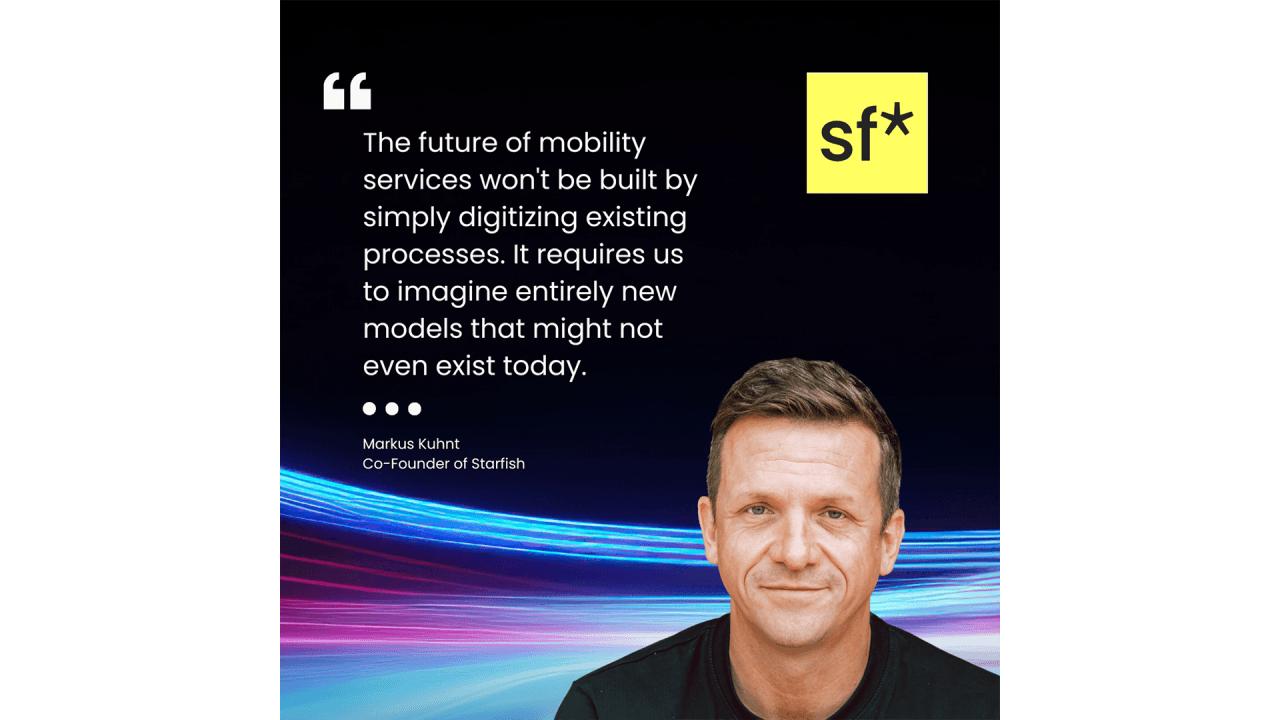

Beyond Charging Points: Why Europe's Mobility Revolution Holds the Key to North America's Future
Introduction
The mobility landscape is undergoing a seismic shift, with Europe leading the charge in revolutionizing how we think about transportation payments and infrastructure. As Head of Growth at Starfish.team, I've observed how mobility payment orchestration has become the backbone of this transformation, extending far beyond simple charging point transactions to encompass a complete ecosystem of connected mobility services.
In this article, I'll explore how Europe's innovative approach to mobility payments is creating a blueprint for North America's future, and why payment orchestration is the critical enabler of this revolution.
The European Mobility Ecosystem: A Model for Innovation
Integrated Payment Infrastructure
Europe's success in mobility innovation stems from its sophisticated approach to payment orchestration. The continent has developed an intricate network where:
Multiple mobility services connect seamlessly through unified payment platforms
Cross-border payment solutions enable fluid international travel
Standardized protocols facilitate interoperability between different service providers
The North American Opportunity
Current Challenges
The North American market faces several hurdles:
Fragmented payment infrastructure
Limited interoperability between services
Complex regulatory environment
Varying technical standards across regions
The Path Forward
To capitalize on the European model, North American mobility providers should focus on:
Unified Payment Orchestration
Implement flexible payment infrastructure
Enable multi-provider integration
Support cross-border transactions
EV Ecosystem Integration
Seamless charging payments
Integration with parking services
Connected vehicle services
Infrastructure Innovation
Smart city payment integration
Real-time payment processing
Automated reconciliation
The Role of Payment Orchestration
Modern mobility payment orchestration platforms like Hellgate® are essential for:
Managing complex payment flows across multiple service providers
Ensuring regulatory compliance across jurisdictions
Optimizing transaction costs through intelligent routing
Providing real-time visibility and reconciliation
Looking Ahead: The Future of Mobility Payments
The future of mobility payments will be characterized by:
Seamless integration between different mobility services
Real-time payment processing and settlement
AI-driven optimization of payment routes
Enhanced security through tokenization
Improved user experience through invisible payments
Conclusion
The European mobility revolution provides valuable lessons for North America's future. By embracing sophisticated payment orchestration solutions, North American providers can accelerate their transition to a connected mobility ecosystem that delivers value for both providers and consumers.
Beyond Charging Points: Why Europe's Mobility Revolution Holds the Key to North America's Future
Introduction
The mobility landscape is undergoing a seismic shift, with Europe leading the charge in revolutionizing how we think about transportation payments and infrastructure. As Head of Growth at Starfish.team, I've observed how mobility payment orchestration has become the backbone of this transformation, extending far beyond simple charging point transactions to encompass a complete ecosystem of connected mobility services.
In this article, I'll explore how Europe's innovative approach to mobility payments is creating a blueprint for North America's future, and why payment orchestration is the critical enabler of this revolution.
The European Mobility Ecosystem: A Model for Innovation
Integrated Payment Infrastructure
Europe's success in mobility innovation stems from its sophisticated approach to payment orchestration. The continent has developed an intricate network where:
Multiple mobility services connect seamlessly through unified payment platforms
Cross-border payment solutions enable fluid international travel
Standardized protocols facilitate interoperability between different service providers
The North American Opportunity
Current Challenges
The North American market faces several hurdles:
Fragmented payment infrastructure
Limited interoperability between services
Complex regulatory environment
Varying technical standards across regions
The Path Forward
To capitalize on the European model, North American mobility providers should focus on:
Unified Payment Orchestration
Implement flexible payment infrastructure
Enable multi-provider integration
Support cross-border transactions
EV Ecosystem Integration
Seamless charging payments
Integration with parking services
Connected vehicle services
Infrastructure Innovation
Smart city payment integration
Real-time payment processing
Automated reconciliation
The Role of Payment Orchestration
Modern mobility payment orchestration platforms like Hellgate® are essential for:
Managing complex payment flows across multiple service providers
Ensuring regulatory compliance across jurisdictions
Optimizing transaction costs through intelligent routing
Providing real-time visibility and reconciliation
Looking Ahead: The Future of Mobility Payments
The future of mobility payments will be characterized by:
Seamless integration between different mobility services
Real-time payment processing and settlement
AI-driven optimization of payment routes
Enhanced security through tokenization
Improved user experience through invisible payments
Conclusion
The European mobility revolution provides valuable lessons for North America's future. By embracing sophisticated payment orchestration solutions, North American providers can accelerate their transition to a connected mobility ecosystem that delivers value for both providers and consumers.